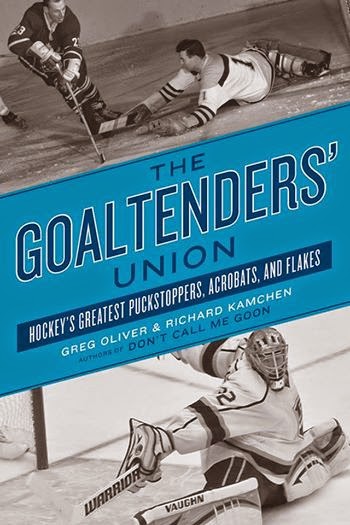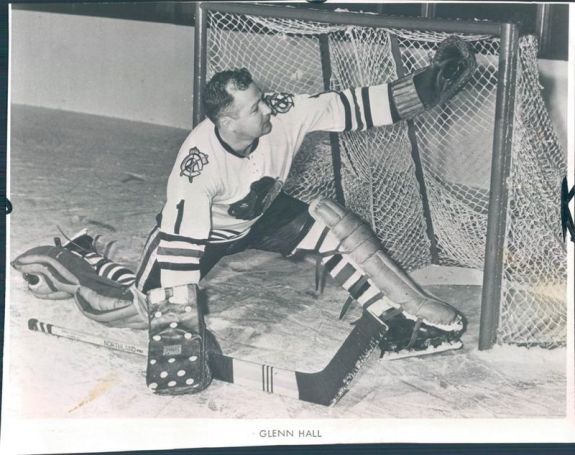Since hockey’s inception as a sport, the goalie position has been a point of intrigue for fans, players, coaches, and all those that have followed the game with some regularity. Flopping on the ice, leaping and lunging to keep the puck out of their net, and dressed in completely different hockey gear than his teammates, the goaltender is a position player that simply does not think along much of the same lines that a skater does.
Often misunderstood because of quirky habits, routines, and/or personalities, goaltenders are a unique breed of hockey players. After all, it does take a certain amount of bravery to stand in a painted area and wait to stop a piece of frozen rubber traveling in excess of 100 miles per hour.
Tasked with a different set of responsibilities, the goalie is the last line of defense for their team. Requiring a great amount of mental fortitude to endure the rigors of manning the crease over the course of an 82 game season, the goaltender has always been a coveted player for any team hoping to win hockey’s ultimate hardware – something that Greg Oliver and Richard Kamchen thoroughly portrayed in their book, The Goaltenders’ Union.
A Guide For Goalie Lovers

Going through decades of material on goalies, Oliver and Kamchen have compiled a popular history on some of the game’s most celebrated, as well as some lesser-known, goaltenders to play the game of hockey since the early twentieth century.
Structuring their chapters in chronological fashion, the authors take the reader through decades of hockey play which only help to show the gradual evolution of the goaltender and his craft. After introducing the reader to a short history of masked men and the evolution of the goalie coach in the introduction, Oliver and Kamchen launch into a sequential breakdown of goalies of different eras.
Starting with pioneers such as Georges Vezina, George Hainsworth, Roy Worters, Cecil Thompson, Turk Broda, Lorne Chabot, and more than a dozen other netminders from the early era, the authors demonstrate just how different the goalie position was during the early 1900s. Despite the fact that the descriptions of the early-era netminders are shorter than the ones that are provided for goalies that played during the Original Six era and onward, there is still a good amount of knowledge to take away from the brief depictions.
Utilizing a wide array of anecdotes, the authors paint a picture of the ups and downs that various goaltenders experienced in their journey to the NHL – something that gives an extremely humanizing feature to an individual that is usually clad in gladiator-like gear and waiting patiently for the opposition to attack. While the anecdotes of goalies – or those from the goalies themselves – are readily used in the book’s sections in order to better describe Original Six and more modern netminders, Oliver and Kamchen also bring to light many points that aren’t discussed by many analysts, journalists, or students of the game of hockey.
In particular, by focusing in on individuals such as Hugh Lehman, Emile Francis, Eddie Johnston, and Scott Gordon, the authors explain why few former goalies have gone on to become head coaches. Possessing a different view of the game, Oliver and Kamchen demonstrated the fact that many former netminders don’t mind narrowing their scope of interest after their playing careers are over. Usually becoming goalie coaches, the authors show that former goaltenders that have become NHL coaches have faced a great amount of pressure in helping out skaters as they might not be acclimated to aiding these individuals in some aspects of the game.
Expansion & The Modern Day

Continuing into the expansion era and the rise – and eventual fall – of the WHA, Oliver and Kamchen portray the way that certain goalies got a chance that they otherwise wouldn’t get when the NHL expanded during the mid-twentieth century and the WHA emerged as a hockey institution.
Creating opportunities for goalies that might not have gotten a taste of the NHL or massive exposure in a professional hockey setting, expansion helped individuals such as Al Smith man the crease for teams such as the Pittsburgh Penguins and Toronto Maple Leafs. On the other hand, the rise of the WHA helped goalies such as Joe Daley live their dream of playing professional hockey as Daley stayed with the Winnipeg Jets for all seven seasons that the WHA was active. Winning 167 games in the WHA, Daley was afforded an opportunity that few before him could have capitalized on as there were only a select amount of jobs available for the most elite goaltending talent before expansion and the WHA days.
With expansion in the NHL continuing after the demise of the WHA, more and more situations presented themselves for netminders. Once the league stipulated that teams needed to carry around two goalies on their rosters, the landscape for netminders changed drastically.
Paving the way for future netminders, expansion and rule changes only advanced the position as more and more goalies were able to break through into the NHL and show off their different skill-sets. In the modern day, one might not be able to comprehend how teams played without a second goaltender on their roster, but that just goes to show how the position has evolved over the decades.
From playing a stand-up to a butterfly to a hybrid style, Oliver and Kamchen portray the way that certain goalies have revolutionized the way that the position is played. Containing excerpts from legends such as Glenn “Mr. Goalie” Hall, Dominik Hasek, Martin Brodeur, and Patrick Roy (to name a few), The Goaltenders’ Union provides an in-depth view of how goalies of various eras have treated the position and how the position is constantly being remodeled by the innovative minds that take up the duties of guarding their team’s crease.
Worth The Purchase
As previously mentioned, those that have an interest in goalies will absolutely love this book. Easy to read with an engaging narrative, Oliver and Kamchen are extremely successful in regard to keeping the reader’s attention through a balanced combination of prose and pictures.
Exploring other fun sides to goaltenders, the authors also delve into lighter narratives of hockey goalies. Writing about fathers and sons who were able to man the crease professionally as well as netminders that made a successful transition from the ice to the broadcast booth, Oliver and Kamchen make their book flow fluidly as there are no dry narratives to be found in their publication.
Of course, there are a plethora of knowledge-filled books available that have depicted the lives and personalities of goaltenders that have played in the NHL – and The Goaltenders’ Union doesn’t at all seek to reinvent the wheel of goalie books – but if one is interested in learning about the evolution of the position from the early twentieth century to the modern day, then this will be the book for you.
My dad, Ralph Bouncer Taylor, played in the NHL/AHA 1927 – 1940. He also coached and announced St. Louis Flyers games with Harry Carey. In one specific game he was asked to vacate his announcing seat and become the official goalie for the Flyers playing against Minneapolis Millers. Can you assist me in finding the newspaper accounts of the game. Nobody in my family remember the exact date though we have lots of photos with also no dates. Your help would be greatly appreciated. Thanks, John Taylor justfaith2@yahoo.com